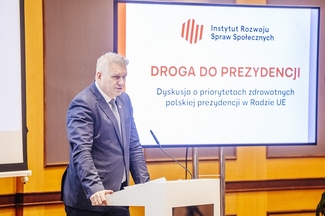Pobierz materiał i Publikuj za darmo
LAUSANNE, SWITZERLAND (May 22, 2014): IMD, a top-ranked global business school (http://www.imd.org/wcc) based in Switzerland, today announced its annual world competitiveness ranking. As part of its ranking of 60 economies for 2014, the IMD World Competitiveness Center also looks at perceptions of each country as a place to do business.
"The overall competitiveness story for 2014 is one of continued success in the US, partial recovery in Europe, and struggles for some large emerging markets," said Professor Arturo Bris, Director of the IMD World Competitiveness Center (http://www.imd.org/wcc) "There is no single recipe for a country to climb the competitiveness rankings, and much depends on the local context".
Highlights of the 2014 ranking
The US retains the No. 1 spot in 2014, reflecting the resilience of its economy, better employment numbers, and its dominance in technology and infrastructure.
There are no big changes among the top ten. Small economies such as Switzerland (2), Singapore (3) and Hong Kong (4) continue to prosper thanks to exports, business efficiency and innovation.
Europe fares better than last year, thanks to its gradual economic recovery. Denmark (9) enters the top ten, joining Switzerland, Sweden (5), Germany (6) and Norway (10). Among Europe’s peripheral economies, Ireland (15), Spain (39) and Portugal (43) all rise, while Italy (46) and Greece (57) fall.
Japan (21) continues to climb in the rankings, helped by a weaker currency that has improved its competitiveness abroad. Elsewhere in Asia, both Malaysia (12) and Indonesia (37) make gains, while Thailand (29) falls amid political uncertainty.
Most big emerging markets slide in the rankings as economic growth and foreign investment slow and infrastructure remains inadequate. China (23) falls, partly owing to concerns about its business environment, while India (44) and Brazil (54) suffer from inefficient labor markets and ineffective business management. Turkey (40), Mexico (41), the Philippines (42) and Peru (50) also fall.
A matter of perception: Countries’ images abroad
Seven of the top 10 countries in the overall ranking for 2014 are also in the top 10 for having an image abroad that encourages business development, according to an IMD survey of executives based in each of these countries. In general there is a strong correlation between a country’s overall competitiveness ranking and its international image as a place to do business (see table).
Executives in Singapore are most bullish on their country’s overseas image, while Ireland, Chile, Qatar and South Korea are all far higher on this criterion than in the overall ranking.
By contrast, executives in the US, France, Taiwan and Poland are far gloomier about their countries’ international images. The US results may reflect international conflicts and domestic political gridlock, while perceptions of France continue to be colored by slow reforms and the country’s negative attitudes toward globalization.
"While economic performance changes from year to year, perceptions are longer-term and shift more gradually. They can also lead to a virtuous circle of better image and better economic performance," Bris said. "So how executives feel their country is being perceived is a potentially useful guide to future competitiveness developments there".
The IMD World Competitiveness Yearbook ranking reflects more than 300 criteria, based on statistical indicators and on an IMD survey of 4,300 international executives. Published since 1989, the World Competitiveness Yearbook is recognized as the leading annual report on the competitiveness of nations.
CONTACT:
Matthew Mortellaro
phone +41 21 618 0352
e-mail: matthew.mortellaro@imd.org
Source: APA-OTS
Polish Press Agency is not responsible for the content of material published on the Web.
Pobierz materiał i Publikuj za darmo
bezpośredni link do materiału
| Data publikacji | 22.05.2014, 11:48 |
| Źródło informacji | PAP |
| Zastrzeżenie | Za materiał opublikowany w serwisie PAP MediaRoom odpowiedzialność ponosi – z zastrzeżeniem postanowień art. 42 ust. 2 ustawy prawo prasowe – jego nadawca, wskazany każdorazowo jako „źródło informacji”. Informacje podpisane źródłem „PAP MediaRoom” są opracowywane przez dziennikarzy PAP we współpracy z firmami lub instytucjami – w ramach umów na obsługę medialną. Wszystkie materiały opublikowane w serwisie PAP MediaRoom mogą być bezpłatnie wykorzystywane przez media. |






